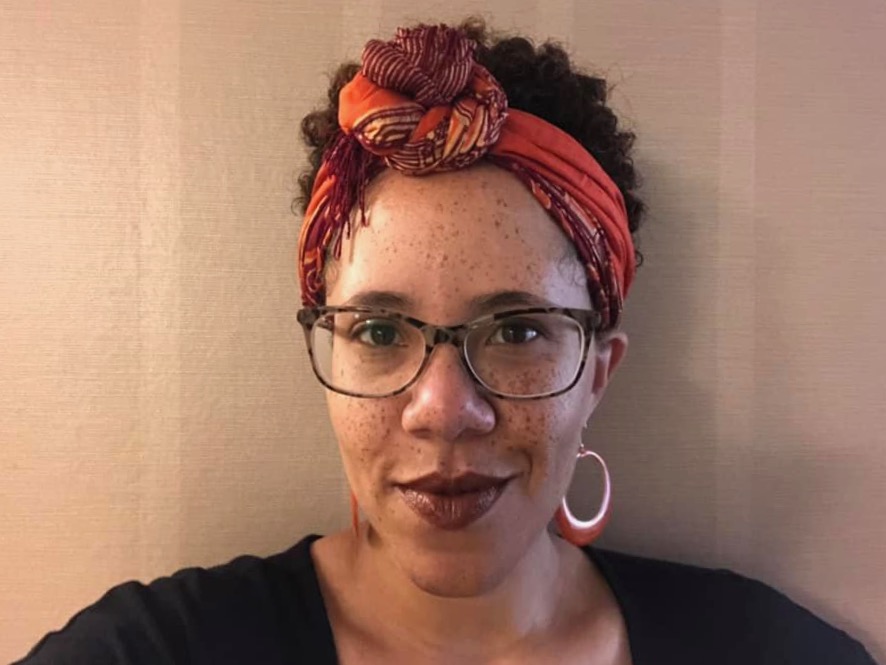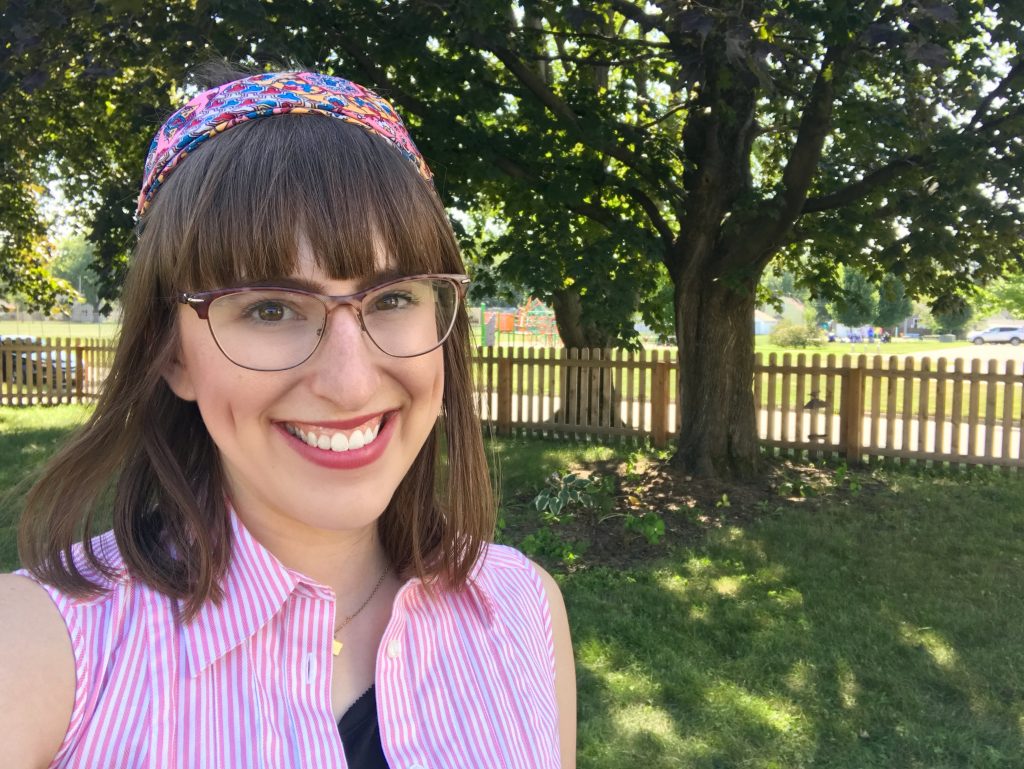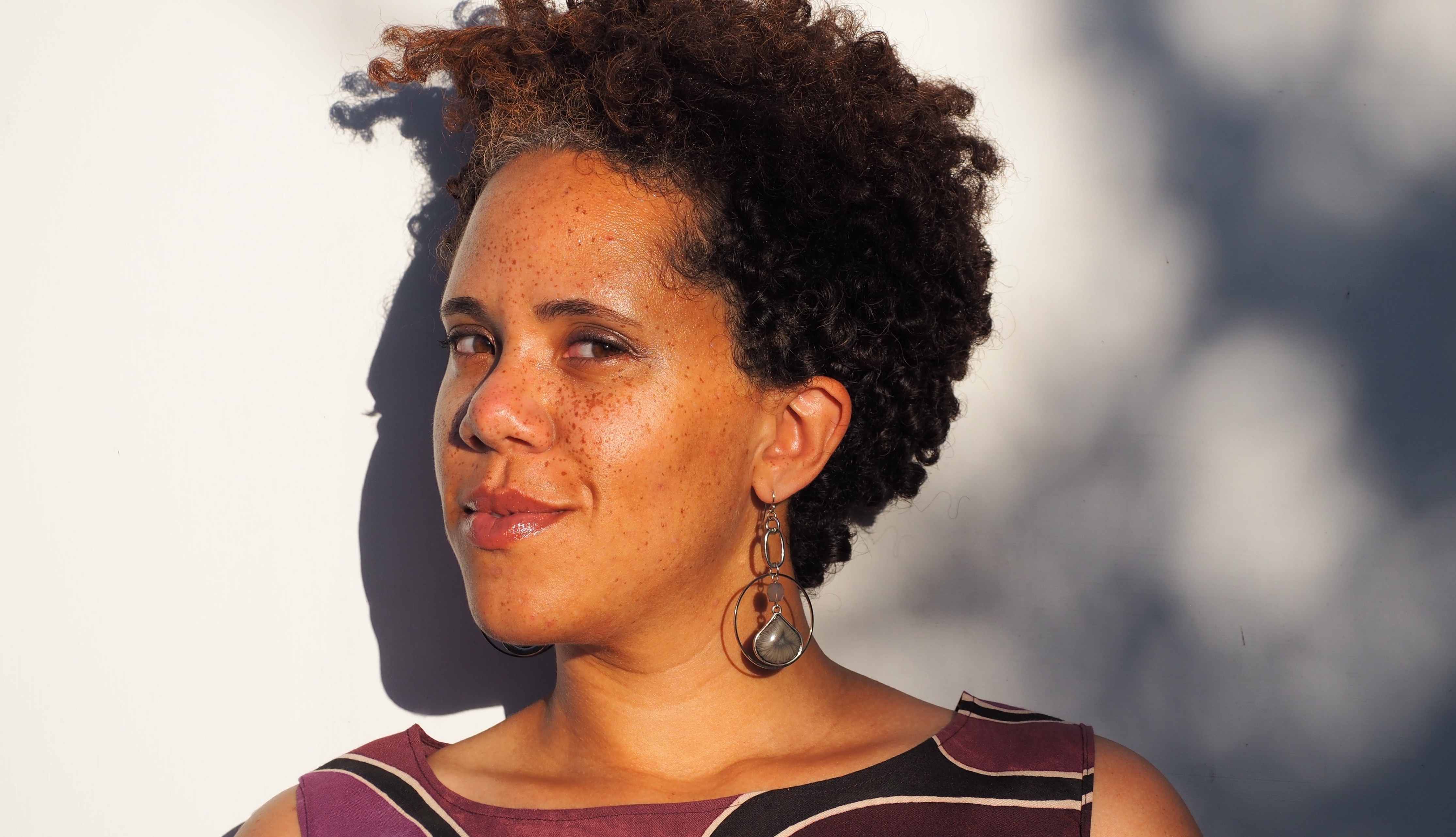I interviewed fiction writer and Michigan-native Jeni McFarland about her debut novel, The House of Deep Water. We spoke about her writing process, the small Midwest farming town that makes up her book, and the novel’s themes of biracial identity, depression, family, new beginnings, and a community with secrets.
The House of Deep Water is available now from G.P. Putnam & Sons. Find McFarland on Twitter @jeni_mcfarland.
Emily Stochl: Tell us about the writing process for The House of Deep Water.
Jeni McFarland: I started this project when I was in graduate school. I was taking a class taught by Robert Boswell, and he gave us a prompt based on four different books we were reading—one was told in vignettes, one was told all in one day, one was told all in one year, and one was a novel in stories. He wanted us to try out different forms and see what felt good. I started writing about this small town, which looked kind of like the small town I grew up in, and it went from there!
ES: Since this is your debut novel, can you tell us about your path to becoming a writer and your career so far?
JM: It was a round-a-bout path. I started out in college wanting to be a music major. At one point I wanted to be a chef, and I wandered away to culinary school. Even when I worked in the culinary industry, I was writing a romance novel that I never finished—I have about 14 chapters of it! I always wanted to study English, but my mom talked me out of it because she was worried about the employability. After I met my husband and decided to go back to school, I decided it was time to study English. He really encouraged me to do it. I started writing and went to graduate school. It took me about five or six years to complete this novel.

ES: Tell us about the novel!
JM: It’s about three women. The main character is Beth, who moves back to the small farming community where she grew up and is one of the only people of color in this town. She moves back in with her white father—she is half black and half white—and she finds that he has a live-in girlfriend, Linda, who is a girl Beth babysat back in high school. The third woman is Linda’s mother, Paula, who is also just returning to the town after having been away for years. Also around this time, their next-door neighbor has just been arrested for horrific crimes, and Beth was one of his victims growing up.
ES: The book is really grounded in this small town, River Bend, Michigan. And you even open the book by describing the town visually and centering us there. Can you tell us about this setting and the role it plays in the novel?
JM: I grew up in a small, farming community down by the Indiana state-line. River Bend is definitely a fictional version of the town where I grew up. It’s more like how the town felt to me than really the way it truly was. Being the only person of color in this small, insular town—especially since I moved there when I was 11—I wasn’t “of” the town. I had a lot of issues growing up there as an “outsider.” I looked physically different, but also I didn’t grow up with everybody else there. I wanted to explore those memories and impressions of my upbringing.
ES: Is it important to you that your work is Midwestern work, and set in Midwestern communities?
JM: It is! I’ve lived elsewhere, but I don’t feel like I really understand those other places quite the way I understand the Midwest. There’s just something about the way people act in the Midwest that is familiar and it makes sense to me. I really missed the feeling here while I was living elsewhere.
ES: Throughout the novel, a lot of people refer to River Bend as this “backwards, little cowtown.” Why did you include this portrayal of the community through the eyes of the characters?
JM: When I was growing up, I would always poke fun of my town and refer to it that way, and I think lots of people who grew up in communities like this can relate! I don’t really think these communities are “backwards,” but I will say, as someone who grew up there and didn’t feel part of it, I could understand a character who had bad experiences in a town like River Bend and lashes out about it. I could imagine why they would take their anger out by looking down on the town that doesn’t accept them. I think it’s a mistake to handle the anger that way, but I love terribly flawed characters, and so I wanted to explore that.

ES: Issues of race are certainly woven into the novel. Are there perspectives or experiences you knew you needed to showcase?
JM: It wasn’t a conscious decision so much as it was something that developed as I was writing. I started writing this right as the Black Lives Matter movement began and there were lots of public conversations happening about race, law enforcement, and the way the media portrays black people. These issues were definitely on my mind while I was writing the novel.
ES: And there’s also a lot of masculine insecurity and toxic masculinity in some of the male characters in the novel. Can you discuss how these emotions, or suppression of emotions, impact the male characters of the novel?
JM: The character who is most obviously dealing with this is named Derrick. It paints everything he does. He moves through the world thinking “Is this how a man should act? Is this how I want to act? Is this true to who I am?” And I think he finds that a lot of the usual expectations of men don’t jive well with what is at his core.
Another character, Steve—who is Derrick’s uncle— doesn’t notice the ways masculine expectations affect him, but I think a lot of his decisions and his philandering comes from that.
ES: Can you talk about the multiple points of view of the novel and the chorus of people who make up this small town? Why tell the story?
JM: If I had focused just on Beth, for example, her skewed perception of the town based on her experience wouldn’t be an accurate portrayal of it as a whole. I felt they needed a whole community to actually represent the town because your experiences there would be different based on who you are as a person, and what you look like. I have a lot of voices in my head, not the scary kind, just the writer-ly kind! So this town had a lot of voices that wanted to get out on the page.
ES: I’d love to hear more about your writing process and how you develop characters and give them a voice.
JM: Character development came naturally to me because I have always looked at people and tried to figure out what motivates them and why they act the way they act. I always start out by writing character sketches, to see who this person is, what they think, what they do, who they love, and what they’re insecure about. From there I can put them into scenes with one another and see how it plays out.
ES: You mentioned early on in our interview that it becomes clear to the readers very early on that Beth was a victim of sexual abuse as a child, even though it’s maybe not clear to the other characters of this story at the start. Was this storyline always an important part of the story?
JM: I was a child who was a victim of sexual abuse, and in writing this novel I worked to sort out my feelings about why I do the things I do. I also have depression, like my main character, which I believe stems from that earlier childhood trauma. So it was partially me trying to work this out for myself but also trying to see if the character could find healing and be okay again in life.

ES: I’m so sorry to hear about your experience. Was it healing for you to write this story?
JM: It was. It was extremely cathartic. I grew up not talking about it like so many people. There is a silence around sexual trauma. So, to not only start to talk about it in my thirties but to write about it, was a big step. The book was going to be out in the world where people could read it. That was terrifying but also very freeing.
ES: You brought up Beth’s depression. I don’t know that you name it depression in the novel. From her perspective, Beth represents her depression as a feeling of being “split between two halves” who behave differently. Why did you portray depression in this way?
JM: A lot of times, especially if you come from a background that doesn’t talk about mental health issues, it is not something that you understand. You’re not aware of what’s wrong — you just know that you feel bad and something feels off. I wanted to get at a character who hadn’t been to therapy and hadn’t begun to do that work, and how she would respond. How she would try to be okay and cope with her situation.
ES: Was there anything that surprised you when you started to write the characters and portray their decisions?
JM: A lot of the men surprised me! I was always asking why they did certain things, and I would have to think about what it would be like to be a man and have the world telling you to act a certain way. Of course, we have that as women, but we are told to behave a different way, so I had to put myself in that.
ES: Since so many of your characters are “starting over” in your novel, do you believe this is a novel about new beginnings? Do you believe in new beginnings and starting over?
JM: I do! I think it’s never too late to start over. We just moved back to Michigan, in part because we wanted to be closer to family, but in part, because we didn’t feel we were where we belonged. It was a new beginning to move back here. And life is all about beginnings and endings. Part of the excitement is starting over, and the winding path you take!
Featured Image: The artist is standing outside against a grey wall. On the right side of the frame, there are a few shadows on the wall from foliage. Her head is slightly turned to the left and the view is from her shoulders up. She is wearing a silver round earring and a sleeveless top with purple and black patterns. Photo courtesy of Jeni McFarland.

Emily Stochl is a writer based in Cedar Rapids, Iowa. She writes regularly for Book Riot. She hosts and produces Pre-Loved Podcast, a weekly interview show about vintage and second-hand fashion. She is an advocate for sustainable living and climate action and volunteers with the Sierra Club, Remake, and the Sunrise Movement. In her free time, she enjoys gardening, yoga, and reading. Find more of her work on her blog and @brumeanddaisy.



